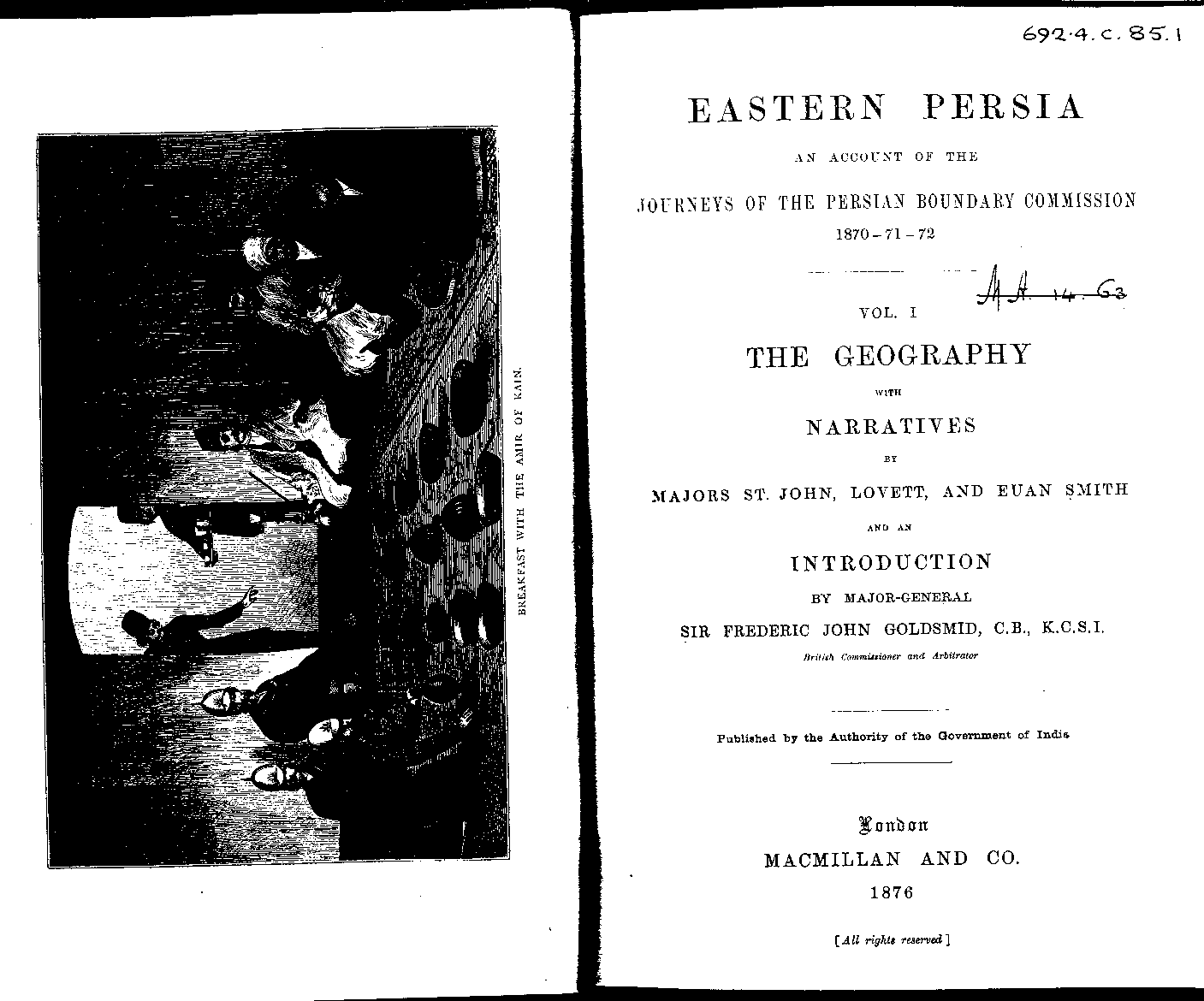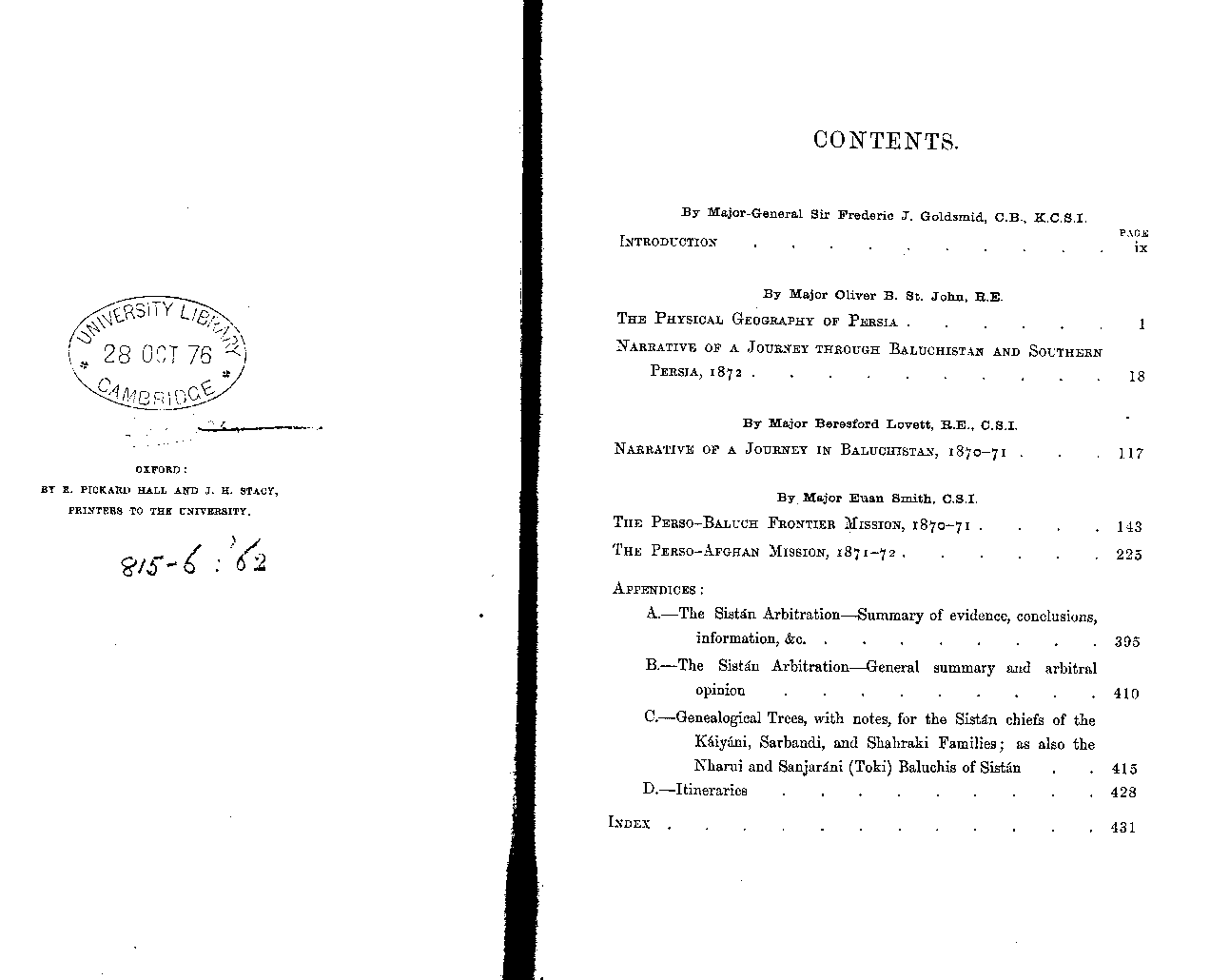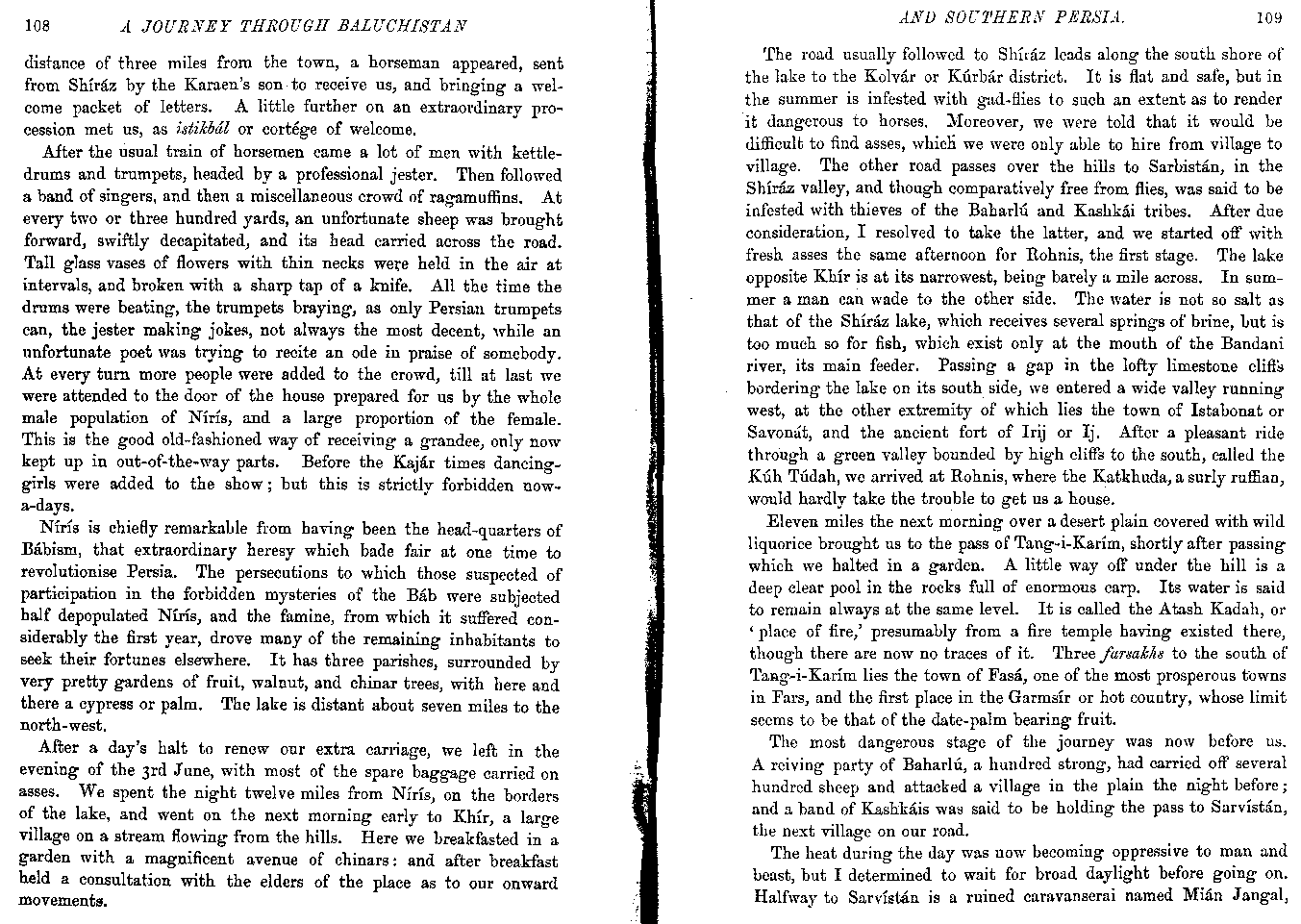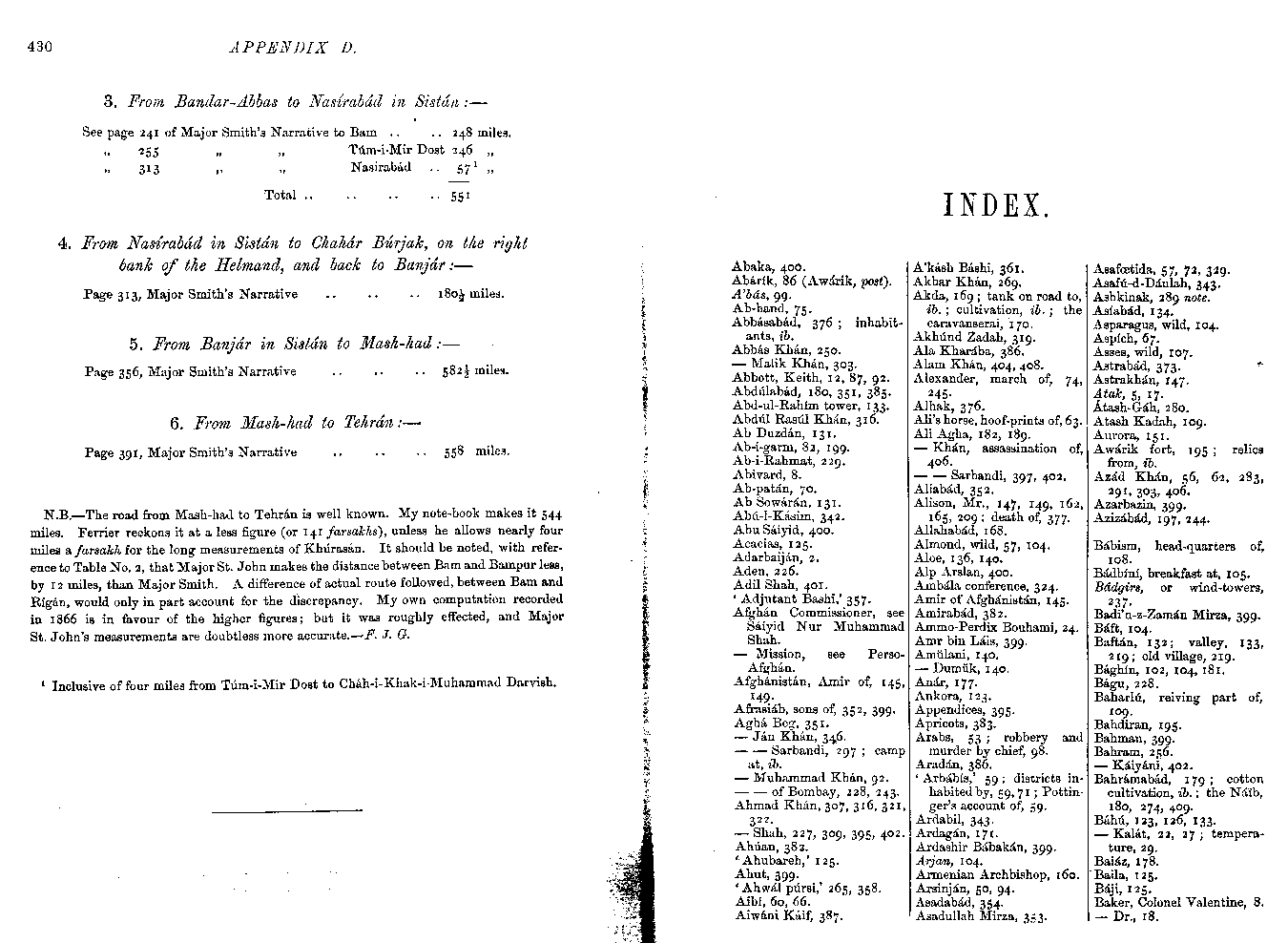
|
|
Abstract: Brief description of the town of Nírís [Nayriz], "the head-quarters of Bábism," and the road to Shiraz. Notes: "Published by the Authority of the Government of India." |
Eastern Persia:
An Account of the Journeys of the Persian Boundary Commission 1870-72
by Major St. John
pages 108-109London: MacMillan and Co., 1876
1. Text
[page 108]... distance of three miles from the town, a horseman appeared, sent from Shíráz by the Karaen's son to receive us, and bringing a welcome packet of letters. A little further on an extraordinary procession met us, as istikbál or cortége of welcome.
After the usual train of horsemen came a lot of men with kettle-drums and trumpets, headed by a professional jester. Then followed a band of singers, and then a miscellaneous crowd of ragamuffins. At every two or three hundred yards, an unfortunate sheep was brought forward, swiftly decapitated, and its head carried across the road. Tall glass vases of flowers with thin necks were held in the air at intervals, and broken with a sharp tap of a knife. All the time the drums were beating, the trumpets braying, as only Persian trumpets can, the jester making jokes, not always the most decent, while an unfortunate poet was trying to recite an ode in praise of somebody. At every turn more people were added to the crowd, till at last we were attended to the door of the house prepared for us by the whole male population of Nírís, and a large proportion of the female. This is the good old-fashioned way of receiving a grandee, only now kept up in out-of-the-way parts. Before the Kajár times dancing-girls were added to the show; but this is strictly forbidden now-a-days.
Nírís is chiefly remarkable from having been the head-quarters of Bábism, that extraordinary heresy which bade fair at one time to revolutionise Persia. The persecutions to which those suspected of participation in the forbidden mysteries of the Báb were subjected half depopulated Nírís, and the famine, from which it suffered considerably the first year, drove many of the remaining inhabitants to seek their fortunes elsewhere. It has three parishes, surrounded by very pretty gardens of fruit, walnut, and chinar trees, with here and there a cypress or palm. The lake is distant about seven miles to the north-west.
After a day's halt to renew our extra carriage, we left in the evening of the 3rd June, with most of the spare baggage carried on asses. We spent the night twelve miles from Nírís, on the borders of the lake, and went on the next morning early to Khír, a large village on a stream flowing from the hills. Here we breakfasted in a garden with a magnificent avenue of chinars: and after breakfast held a consultation with the elders of the place as to our onward movements.
[page 109]
The road usually followed to Shíráz leads along the south shore of the lake to the Kolvár or Kúrbár district. It is flat and safe, but in the summer is infested with gad-flies to such an extent as to render it dangerous to horses. Moreover, we were told that it would be difficult to find asses, which we were only able to hire from village to village. The other road passes over the hills to Sarbistán, in the Shíráz valley, and though comparatively free from flies, was said to be infested with thieves of the Baharlú and Kashkái tribes. After due consideration, I resolved to take the latter, and we started off with fresh asses the same afternoon for Rohnis, the first stage. The lake opposite Khír is at its narrowest, being barely a mile across. In summer a man can wade to the other side. The water is not so salt as that of the Shíráz lake, which receives several springs of brine, but is too much so for fish, which exist only at the mouth of the Bandani river, its main feeder. Passing a gap in the lofty limestone cliffs bordering the lake on its south side, we entered a wide valley running west, at the other extremity of which lies the town of Istebonat or Savonát, and the ancient fort of Irij or Ij. After a pleasant ride through a green valley bounded by high cliffs to the south, called the Kúh Túdah, we arrived at Rohnis, where the Katkhuda, a surly ruffian, would hardly take the trouble to get us a house.
Eleven miles the next morning over a desert plain covered with wild liquorice brought us to the pass of Tang-i-Karím, shortly after passing which we halted in a garden. A little way off under the hill is a deep clear pool in the rocks full of enormous carp. Its water is said to remain always at the same level. It is called the Atash Kadah, or 'place of fire,' presumably from a fire temple having existed there, though there are now no traces of it. Three farsakhs to the south of Tang-i-Karím lies the town of Fasá, one of the most prosperous towns in Fárs, and the first place in the Garmsír or hot country, whose limit seems to be that of the date-palm bearing fruit.
The most dangerous stage of the journey was now before us. A reiving party of Baharlú, a hundred strong, had carried off several hundred sheep and attacked a village in the plain the night before; and a band of Kashkáis was said to be holding the pass to Sarvístán, the next village on oar road.
The heat during the day was now becoming oppressive to man and beast, but I determined to wait for broad daylight before going on. Halfway to Sarvístán is a ruined caravanserai named Mián Jangal ...
2. Image scans (click image for full-size version)

|
|


